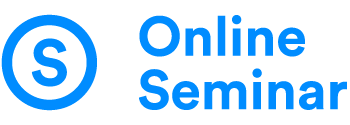What are the secrets of a good webinar? What ensures that your viewers stay with you until the end of the broadcast? These are the 13 ingredients that make your webinar a success.
Hosting a webinar is in many ways the same as giving a presentation. Yet there are plenty of differences. Because webinars are interactive and in front of the camera, you have a completely different experience. As a host, it is therefore important to be well-prepared. If you stick to these 13 points, you will be in the winning team. We have gathered the tips over the years and are based on in-depth experience with webinars.
1.Explain at the start of the webinar how everything works and what participants can expect
At each webinar there are participants who are joining a webinar for the first time. That’s why you should always start with a short explanation of how a webinar works and how the viewers can participate. This also gives latecomers the opportunity to join before the actual content starts.
2. Provide a clear structure
Start the webinar by sharing the structure of your story. For example: ‘3 future scenarios for the real estate market in Amsterdam’. As a viewer, you know that 3 scenarios follow. This creates a lot of clarity. Then make sure that each component receives roughly the same amount of attention, otherwise the balance of the presentation will be lost. In terms of structure, it’s always good to use a scale: from the least probable to the most probable scenario. Always save the most interesting item for last. That makes you hold the viewer’s attention for as long as possible.
3. Keep the information per slide concise
Preferably use a powerpoint presentation to support your story. Make sure that the information is very concise and that there is one main point per slide. As in the example above: ‘Scenario 2: Foreign investors take over the market’. Don’t provide more information. Otherwise, viewers get overloaded. However, it may work well to use an image that supports the story.
4. Make the presentation dynamic
Nothing is more boring than watching a monologue of one speaker sitting at a desk. Viewers might tune out quickly. Therefore, use several speakers, or take a moderator or co-host with you. Change speakers regularly, so that the webinar remains dynamic. In between, show a video, product or your own online platform to create even more variety.
5. Involve the webinar participant actively in the presentation
Make a webinar really work for you by getting the audience involved. The advantage of a webinar over a regular television broadcast is that viewers can participate live. For example, ask viewers (poll) questions. You are then able to share the result directly in the webinar. The reactions of your viewers can then be used in the broadcast. Also, allow enough space for viewers to ask questions and to answer them.
6. Encourage the viewer to take action!
Add a call-to-action button to your presentation. In this way you offer even more Valuable information for the viewer and you can collect valuable data as a company. Think for example of an additional e-book that the viewer can download, which helps your company collect e-mail addresses. Two birds with one stone.
7. Practice makes perfect
In a webinar, there’s a camera. When you’re not used to it, you can start stumbling. It happens often enough. So practice the story at home or in the office. For example, record it and check it. This way, you can also determine whether adjustments to the presentation are necessary.
8. Keep the pace low
As a host, present slowly. It makes it so much easier to follow for your audience. Therefore, make sure that the pace remains low and that there are enough pauses in the presentation.
9. Alternate between eye contact and looking at the screen
As an online host, you often operate the system yourself. This means that you will have to look at the screen from time to time. This is not a problem at all and does not disturb the participants. Alternate however between looking at the screen and looking directly into the camera and, if necessary, checking notes. These changes come across as very natural, as long as they happen quietly.
10. Explain what you are doing
When you perform certain actions on your computer, such as drawing or starting a movie, let the audience know what you are doing. This increases clarity and makes it easier for them to follow the webinar.
11. Explain who is asking the question
When you answer a forwarded question as a presenter, read it out and call the questioner by name. For example: ‘This is a question from Karlijn. She wants to know how it is possible that cryptocurrency is so volatile.’ This makes the webinar more personal and promotes more interaction: other participants will recognize themselves in Karlijn and will also dare to ask a question more easily.
12. Remember to summarize
Participants get a lot of information to process during a webinar. They hear and see new information, vote on polls and chat in case of questions. It’s a lot of action in a short period of time. It’s therefore a good idea to summarize your presentation until that point every now and then in order to give everyone the opportunity to catch up.
13. Be concise when it comes to closing the webinar
To ensure that as many participants as possible click on the action buttons and complete the survey, it’s very important that the end of the webinar is short and concise. Unlike a physical seminar, there is no threshold for participants to leave just before the end of the seminar. Give them as little opportunity as possible to do so.


